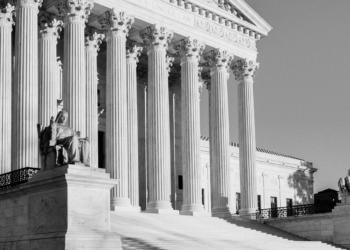While in government, I once conducted an Equal Employment Opportunity Training (EEO) on Preventing Harassment and Discrimination in the workplace. At that time, the country was engaged in a war. The substantive discussion was about inappropriate comments at work and the banter suddenly took a political turn. One of the attendees asserted that he had “The First Amendment right” to “say whatever” he wanted. He then stated that the reason why “our boys are fighting is so that I can exercise my right.” That led to a contretemps that had to be managed.
Then, as now, there was an international conflict and a groundswell of divergent opinions. Regardless of one’s own personal opinion on whether social media portends the ‘Fall of Western Civilization’ or whether it is simply the bane of the 21st Century, there is no disputing that the number of platforms have increased and amplified the cacophony of opinions which very likely may be shared in the workplace.
This article is intended to address the management of workplace opinions expressed in response to global events which may trigger “backlash discrimination”, i.e., overt acts of workplace discrimination targeted toward Americans whose national origin is implicated in a military conflict.
Government has best practices and tools to manage and balance the equities regarding The First Amendment in the public sector. This article is focused on the private sector. Whether it is bodycam video reflecting violence, incidents of the faithful being killed in their places of worship, hate crimes or war, passions will be enflamed and there will be no shortage of opinions.
For an employer, there are three issues:
- Should personal opinions be allowed in the workplace?
- If an employer becomes aware of hate speech made by an employee on the employee’s personal account, is there an issue and should the employer take action?
- Should employers issue statements as a result of local, domestic or global events?
3 Examples of How Workplace Issues Arise Around Global Events
Example 1
As a result of the recent conflict, Employee A places a small flag on his office door reflecting one of the combatants. The next day, Employee B, whose office is two doors away, places a larger flag on his door reflecting the other entity in the conflict. A and B continue to perform their jobs without incident.
Example 2
Employee A replaces his photo in his email signature with a flag reflecting one of the combatants and the words “I stand with you.” Employee B then initiates an email communication with Employee A about the war and the communications devolve into “hate speech” from both employees. Only A and B are involved in the communications, but A mentioned it to his supervisor.
Example 3
The employer issues a company-wide statement about the war that carefully threads the historical, political and humanitarian implications, albeit without taking an affirmative position. Employee A replies to the entire company by asking “Why can’t you take a position?”
Addressing the 3 Examples
In Example 1, both employees are expressing their opinions and positions by displaying flags. Fortunately, there were no contentious discussions and both employees continued to do their jobs. Here, the employer’s responsibility is to monitor the situation. The employer should refrain from taking any action, such as asking both employees to remove the flags unless there is a policy that expressly prohibits the display of flags in the office. It is important to note that asking one employee, and not the other, creates a perilous path toward an internal “backlash discrimination” complaint. The EEOC’s data suggests that backlash discrimination increases during war time.
Example 2 presents a challenge in that it is not the usual workplace situation and only occurred because of the present conflict. Example 2 implicates personal, political and national origin sentiments that require that the employer act with extreme caution.
Many private sector employers now have internal alternative dispute resolution (ADR) modules which are intended to amicably resolve even the most complicated and thorny issues. Those options range anywhere from mediation (third party intervention) and arbitration (a singular arbiter or fact-finder who renders a dispositive opinion). While ADR is within the tool-kit of some employers, most do not have such tools at their disposal.
The employer’s priority in Example 2 is to manage the conflict. Individual meetings must be scheduled as soon as practicable. If the company has an expressed policy prohibiting “hate speech,” then both employees must receive communications noting their violation of the policy and directing them to “cease and desist.” The communication must come from the C-Suite so that the employees understand the seriousness of the matter. Because the exchange was only between A and B, the issue is much more manageable than if the “hate speech” exchanges were in a company-wide email. While there are no catchall responses, the employer must avoid taking a position on the political issue and should solely focus on the violation of the company policy and correcting behavior.
Is “hate speech” in the workplace an event that warrants separation? In the 21st Century, probably yes. Should A and B be fired? Any disciplinary action should depend on their work histories, disciplinary records or lack thereof, whether the act was one of first impression and whether the dispute played out in a firm-wide email chain or, as in Example 2, limited to the employees involved. The limited scope of the disagreement is such that confidentiality can be effectively managed, whereas company-wide disputes present a greater challenge. The C-Suite decisions must be made with all necessary stakeholders. If the human resources and general counsel roles are not in the C-Suite, then they must be included anyway as they are critical stakeholders. For private employers with represented staff, the Collective Bargaining Agreement (CBA) will be an essential variable along with the relationships with the union.
While Example 2 was limited in scope, Example 3 has serious company-wide implications. ‘To Opine or Not to Opine?’ That is the issue for CEOs in light of the passion that the volatile triumvirate of politics, war and religion can yield. In Example 3, the CEO issued a carefully worded statement that was intended to navigate the precarious line of neutrality. Neutrality is a position. It is not a partisan position which is what the employee was requesting. An employee whose political connection is to one side of the conflict asks, “Why can’t you take a position?” In the 21st Century workplace, CEOs and private sector leaders are in the unenviable position of feeling pressure (internally and externally) to offer opinions about global, political and local matters. Whether the constituency includes boards of directors, internal staff, private donors, shareholders or students, there may be pressure especially when the issue is a geopolitical tinderbox with historical, religious, cultural and military significance with familial connections to the United States.
The Employee Handbook
This article does not purport to be a solution to any of the issues raised and is intended more as an instructive tool. While the days of “no comment” as a practical, legal and political position have passed, this writer believes that there is, at least, one mechanism that exists for employers that wish to be either expressly neutral or want to refrain from taking any position like the CEO in Example 3. That mechanism is the Employee Handbook.
The current Middle East situation is the most recent war. There have been other wars previously and, unfortunately, there will be others prospectively as war is the human condition’s oldest form of conflict resolution. There will be more “hate speech” and divisive opinions. There will also be state/city agency acts of unreasonable or illegal use of force against unarmed citizens. These issues will invariably inflame passions and the visceral feelings will manifest in the form of opinions in the public space and in the workplace.
Employers may want to consider pre-empting these predictable issues by articulating policies in the Handbook. For example, “the Acme Breadmaking Company, by a resolution of the Board of Directors, as a policy does not comment on public matters.” When issues arise, staff can be reminded of and directed to the cite in the handbook. As a dovetail, the policy could include language that used to be present in handbooks until about 15 years ago, i.e. “Employees are reminded that office equipment, including emails, are only to be used for work purposes only. Communications should be limited to matters and issues relevant to and incidental to the company’s business. Employees are advised to not use company email for any personal solicitations. The firm’s culture does allow and encourages birthday greetings, condolences, etc.” Such clauses would be the first line preemption.
For businesses that rely on grants or individual donors, the sample policy, supra, must be complemented with a detailed internal and external communications’ strategy. What drives the expectations of a partisan position statement from a CEO in the current climate is the ‘how could you not take a position?’ question. Industry, notwithstanding, the business goal is to capture, attract and retain market share. Taking a partisan position risks alienating stakeholders. Taking a principled, well-articulated, neutral position also risks alienating stakeholders. Having a policy that precludes such statements may be the best way forward.
Opinions Expressed Outside the Workplace
The final issue involves two employees who are “friends” on a social media platform. That platform is not connected to the workplace. The opinions expressed are solely those of the employees. One employee observes that the other employee, his “friend,” is using “hate speech” directed toward one of the enemy combatants in the current war. The observing employee informs human resources about what he observed. Have employees been terminated based on similar facts? Yes, especially when surrounding particularly contentious issues of race or politics.
The narrow issue is whether an employer should terminate an employee for other otherwise distasteful comments or “hate speech” on a personal social media platform as a best practice? As with many legal issues, it depends. The purpose of this fact pattern is for employers to understand the varied ways that employee opinion may impact the workplace. Like all of the issues broached, this issue must be addressed by all critical and necessary stakeholders. The analysis, again, should include an internal review of the employee’s record, a review of the Employee Handbook to ensure that the ‘employment at-will’ clause is in the handbook and offer letters, the Social Media Policy (if it exists) and, if available, a review of the alleged “hate speech.” As with all deliberations, the best interest of the firm or company is paramount relative to the employee’s right to participate in social media. The social media review should focus on the alleged statement, but should also look for expressed references to the firm which could impact the perception of the firm.
Finally, we live in a country of 350 million Americans where many will have opinions and will want to, sometimes, share those opinions in the workplace. Employers cannot control the opinions, but they must control the workplace tools by having the necessary policies, practices and communications’ strategies in place.









Comments 1
Kudos to Mr. Granderson for not just illuminating important workplace issues happening in real-time, but for providing practical solutions employers large and small can employ to address them.